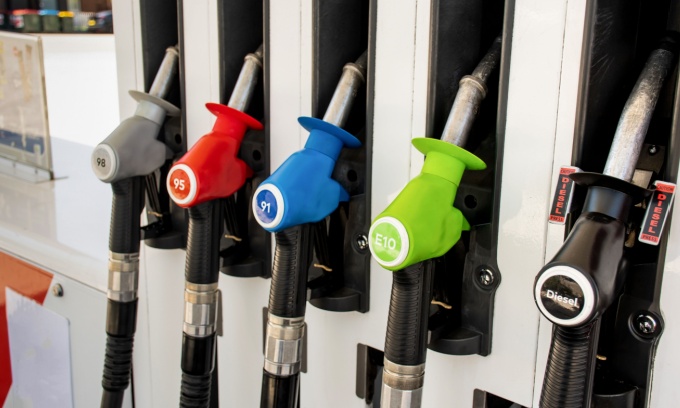KEY POINTS:
- The difference between the numbered petrol types (91, 95 and 98) comes down to their Research Octane Number (RON), which represents the fuel’s ability to avoid engine-damaging, abnormal combustion.
- While premium fuel doesn’t guarantee better performance, it may be worth evaluating if using a higher RON-rated fuel could give you improved fuel economy. Keep in mind that premium fuel is often more costly.
- Filling up with the wrong fuel type can potentially lead to your vehicle being unable to start, or at worse risk extensive engine damage.
E10 vs 91 vs 95 vs 98. You’ve probably seen all of these numbers at the fuel pump before, but what do they actually mean? Well, they’re all different types of unleaded fuels, all with different octane ratings. With all these possible choices, you may be perplexed as to which one you should be using.
To find the fuel that your vehicle requires and prefers, you can look in your vehicle’s handbook or owner’s manual, or if necessary, do a Google search to find the manufacturer’s website. This should tell you the preferred choice of fuel for your car. That being said, there may be other options available to you, with some fuel brands making bold claims around the benefits of using their fuel over others.
How, then, do you choose the right fuel? To start, it’s important to know some key details.
What types of unleaded fuel are available?
Regular Unleaded and Premium Unleaded
When it comes to petrol engines, there are several options available—these include petrol labelled as 91 (known as regular unleaded petrol: RULP), and 95 and 98 (both known as premium unleaded petrol: PULP). Leaded petrol is no longer sold in Australia, having been banned in 2002 due to its environmental and health risks.
Ethanol
Ethanol is considered a renewable biofuel, typically made from grain, sugar cane or some other plant product. Many service stations offer E10 fuel, which is a mixture of 90% unleaded petrol and 10% ethanol. The Queensland Government says the unleaded petrol component is normally regular, but may be premium in some cases. There is also E85, which is a blend of 85% ethanol, which is reserved for very specialised cars.
Unleaded petrol types in Australia: the difference between 91, 95 and 98.
Most vehicles on Australian roads use unleaded fuel. But what do the different numbers mean? These numbers for regular and premium unleaded petrol refer to the Research Octane Number (RON) rating of a fuel. Professor Shawn Kook, an expert in car engines at the University of New South Wales (UNSW), says that RON is a standard measure of how well a fuel performs in an engine.
“Research Octane Number represents a fuel’s ability to avoid engine-damaging, abnormal combustion,” Professor Kook states. This is called knocking—also known as pinging or pinking—which reflects the sound you may hear from your engine and could be a sign you’re not using the correct fuel for your car.
“Higher RON fuels are designed to reduce the knocking and so higher RON fuel can help achieve higher engine efficiency and lower fuel consumption,” said Professor Kook.
When it comes to which brand to choose, e.g. Ampol, Caltex, BP, 7-Eleven etc., Fuelcard Report, a fuel receipt tracking service, says that while there might be slight variations between the different fuel brands, no brand consistently stands out as the better option. This may be due to Australia’s national fuel standards which ensures a basic level of fuel quality across all brands. Service stations generally compete through fuel pricing, as well as specific discount and rewards programs.
Can you use E10 fuel in your car?
We’re encouraged to consider using E10 to help reduce potentially harmful exhaust emissions. Most, but not all, modern cars can use E10, but it’s still important to check if your car can use the fuel before filling up.
Some E10 unleaded petrol blends are marketed as 94 RON. That means they do not meet the fuel standards for cars recommended to use 95 or 98 premium fuels. Your car’s handbook or manual should tell you if you can or can’t use E10. If the advice is not clear, check with the manufacturer’s website or ask whomever services your car. There are some checks online, such as the E10 compatibility check run by the New South Wales government.
Will E10 save you money?
E10 is generally slightly cheaper than regular 91 petrol but that price difference can change and varies between different states and territories, as well as between regional and metropolitan areas.
E10 does have a 3% lower energy content than 91, so you may find that you’ll use slightly more fuel to travel the same distance, says the Royal Automobile Club of Queensland (RACQ).
“To offset the increased consumption, you should look for E10 that is at least 3% cheaper than 91 petrol.” There are also a number of websites and apps available, such as Petrol Spy, MotorMouth and GasBuddy, that can help you check the price of different fuels types available near you.
Related: 10 tips to save money on your car insurance
When should you use premium fuel in your car?
Most new cars sold in Australia since 1986 were built to use 91, and recent petroleum statistics from the Australian government show it’s by far the most popular fuel. For example, Australian vehicles guzzled more than 8.9 billion litres of regular 91 fuel in 2024. That compares to about 2 billion litres of 95-97, 3.3 billion litres of 98 and 1.9 billion litres of blended ethanol fuel.
An increasing number of cars now require 95 premium fuel and some high-performance models require 98. Professor Kook says many high-end manufacturers design their cars to use only premium fuels. “This means if those engines run on lower RON fuels, they will struggle with knocking, leading to potential engine damage.”
Are there any benefits to using premium fuel?
You can use a higher-octane fuel than what’s recommended for your car, but the RACQ notes that you may not see any benefit in performance. The advice here is to do your own evaluation to see if using a higher RON-rated fuel than recommended gives you any improved fuel economy. Many modern cars allow you to track their economy by measuring the litres of fuel they use for every 100 km travelled (L/100km).
This figure can vary though, depending on the road conditions you travel on. For example, journeys on slow urban roads tend to be worse for fuel economy than faster motorways and highways. You might need to do several trips with the different fuels in the tank to see if you notice a difference. You also need to take into account the increased costs of premium fuels. There could be small improvements in fuel economy, but the higher cost of premium fuel needs to be considered, as this could cancel out any perceived or real benefits.
The National Roads and Motorists’ Association (NRMA) warns that fuelling an engine with 95 or 98 won’t necessarily improve performance or fuel economy unless the engine is specifically designed to run on those premium fuels. The Royal Automobile Club of Victoria (RACV) has given similar advice and warns against paying extra for premium fuels if you see no benefit. There may be other benefits to using premium fuels though—they often contain more cleaning agents, which could help to keep your car’s fuel systems cleaner for longer.
What if you accidentally fill up with the wrong fuel?
If you’ve accidentally put diesel in the tank of a petrol engine, then the car probably won’t even start. Still be mindful not to start the car at all. Doing so can increase repair costs by circulating the diesel through the fuel system. The tank will need draining and refilling with the correct fuel. If you’re a member of a motoring organisation or have a car insurance policy with roadside assistance you can contact them for help, or contact your local garage or servicing centre.
Using a higher RON-rated petrol than is recommended is less of a worry. But if you’ve accidentally used a lower rated petrol than recommended for your car then you may experience ‘knocking’, or again you may need to get the tank drained and refilled with the correct fuel. Some vehicles specified for high-octane fuels will operate satisfactorily on regular unleaded but with reduced power and economy, while others risk extensive engine damage.
If the car is showing no signs of distress (no strange noises or performance issues), it would be wise to drive gently (no hard acceleration, no towing etc.) while using up the wrong fuel and frequently topping up with the correct fuel. Continue to do this until you have a tank full of only the correct fuel. Doing this gradually dilutes the wrong fuel and brings your engine back to normal.
Compare car insurance policies
If you’re comparing car insurance policies, the comparison table below displays some of the policies currently available on Canstar for a 30-39 year old male seeking comprehensive cover in NSW without cover for an extra driver under 25. Please note the table is sorted by Canstar Star Rating (highest to lowest) followed by provider name (alphabetical) and features links direct to the providers’ websites. Consider the Product Disclosure Statement (PDS) and Target Market Determination (TMD), before making a purchase decision. Contact the product issuer directly for a copy of the PDS and TMD. Use Canstar’s car insurance comparison selector to view a wider range of policies. Canstar may earn a fee for referrals
- Save 15%^ on your first year’s premium when you purchase a new Car Insurance policy online.
- 24/7 Phone & Online Claims.
- Budget Direct - Insurance Solved.
- Insurance that's a bit more you-shaped.
- Canstar’s 2025 Most Satisfied Customer Car Insurance – NSW, VIC, SA
- Lodge a Claim 24/7 with our Advisors
Cover image source: Daria Nipot/Shutterstock.com








